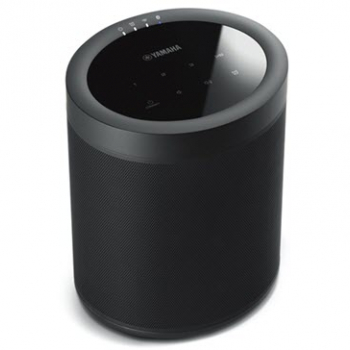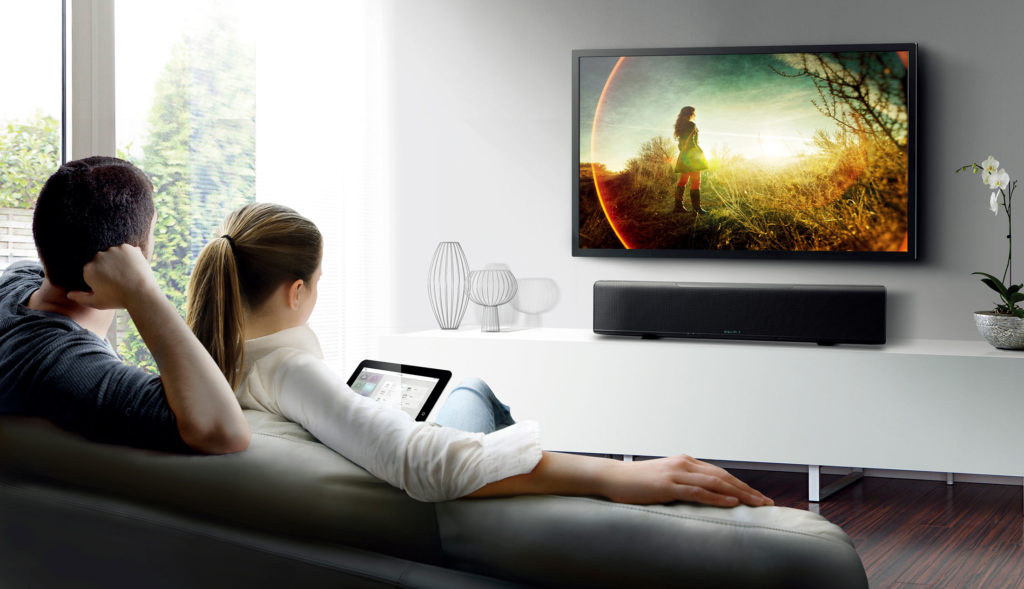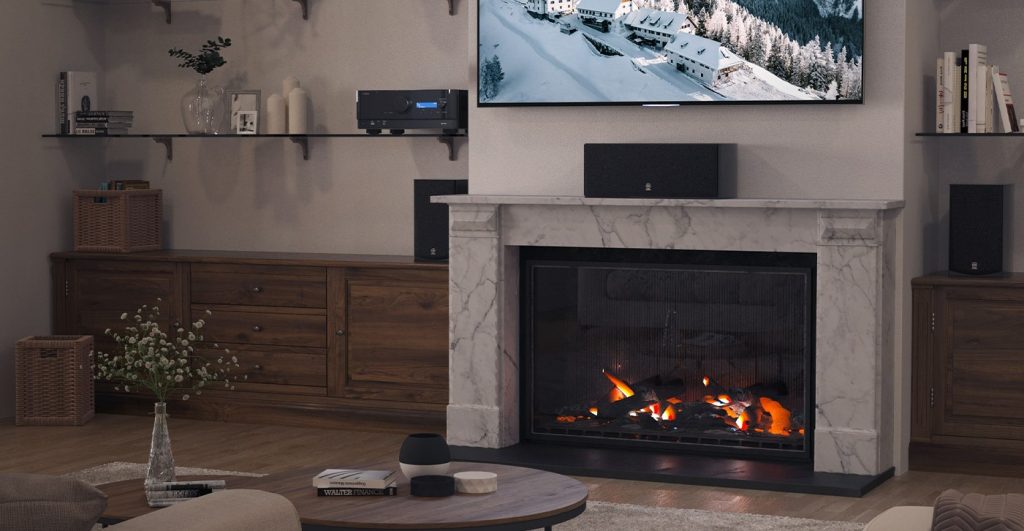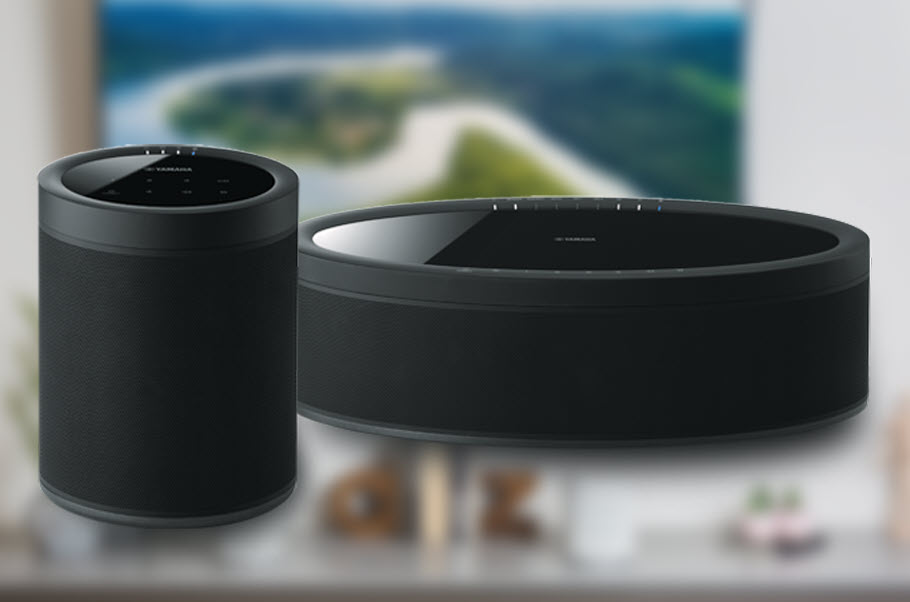The Changing Face of Home Audio
How to ensure that great audio never interferes with the aesthetics of your living environment.
Once upon a time, all the cool kids had a stereo system so large it had its own zip code. What’s more, all the receivers, amplifiers, turntables, equalizers and other gear were left out in the open to be ooohed and ahhhed over.
That said, those early days of home audio are certainly nothing to scoff at. After all, it was the era of in-your-face audio that kick-started the industry, eventually growing from a niche market of gear-heads into a mass market of music lovers from all walks of life.
But as home audio evolved, with new formats, new types of content and new modes of listening, so too did the form factors of the equipment delivering the tunes. Some gear — like receivers and amplifiers — began to shrink in size, becoming more streamlined and vastly easier to integrate into family rooms, dens … wherever. What’s more, the slimmer, sleeker components could go toe-to-toe with their larger, boxier predecessors, turning home audio into a luxury that everyone — from hard-core music enthusiasts to casual listeners — could appreciate and enjoy.
Accelerating the evolution were the introductions of new technologies like Wi-Fi-and BluetoothⓇ-enabled audio systems, sleek sound bars and smart voice-controlled speakers. These days, you can have your music wherever and however you like to listen to it … no matter what type of music you like, or the size or layout of your home. After all, music is meant to be heard, not seen! Fortunately, there are many approaches you can take today to ensure that all that great audio never interferes with the cosmetic details of your home.
Here are some aesthetically friendly ways to do just that.
Surround Sound, Hold the “Spaghetti”
Home audio encompasses more than just gear designed to your music listening pleasure. Surround sound systems for home theater setups are part of the realm, too. But physical wiring used to be the only way of getting audio from a receiver to your speakers — and when there are speakers that need to get placed at the other end of the room, things get considerably more complicated.
Fortunately, the days of snaking wire behind baseboards, underneath carpeting or simply laying the spaghetti as close to the wall as possible are over. Thanks to wireless products like Yamaha MusicCast speakers, sound bars and AV receivers, there’s no need to get messy to enjoy surround sound. The carpeting and baseboards stay put, the walls and floors remain unmarred, and you can have your system up and running in almost no time. Plus, since there’s no speaker wiring required when using wireless Yamaha MusicCast 20s or MusicCast 50s for your surround sound speakers, this type of surround sound system can be easily reconfigured should you rearrange the furniture.
Hi-Fi Goes Wi-Fi
Vinyl is experiencing a rebirth (for five reasons why, click here), and Yamaha is one of the only manufacturers giving turntables a modern twist by building in Wi-Fi capability. This means that the album spinning on a single turntable, when connected to a MusicCast whole-house wireless audio system, can be heard in every room of your home — even out on your patio or in your backyard. Instead of being sequestered to a single space to listen to your records, you can spin and stroll anywhere you like, never missing a beat or cluttering up your home with multiple turntables — or even a receiver, for that matter. Plus, when the album is over, you can stream via built-in services such as Spotify from your mobile device to all the connected speakers.
The Yamaha MusicCast VINYL 500 turntable is a perfect example of how this technology works. Simply put it where it looks best, plug it in, turn it on and kick back while it delivers rich, full-sounding audio to every MusicCast-enabled wireless speaker in your home.
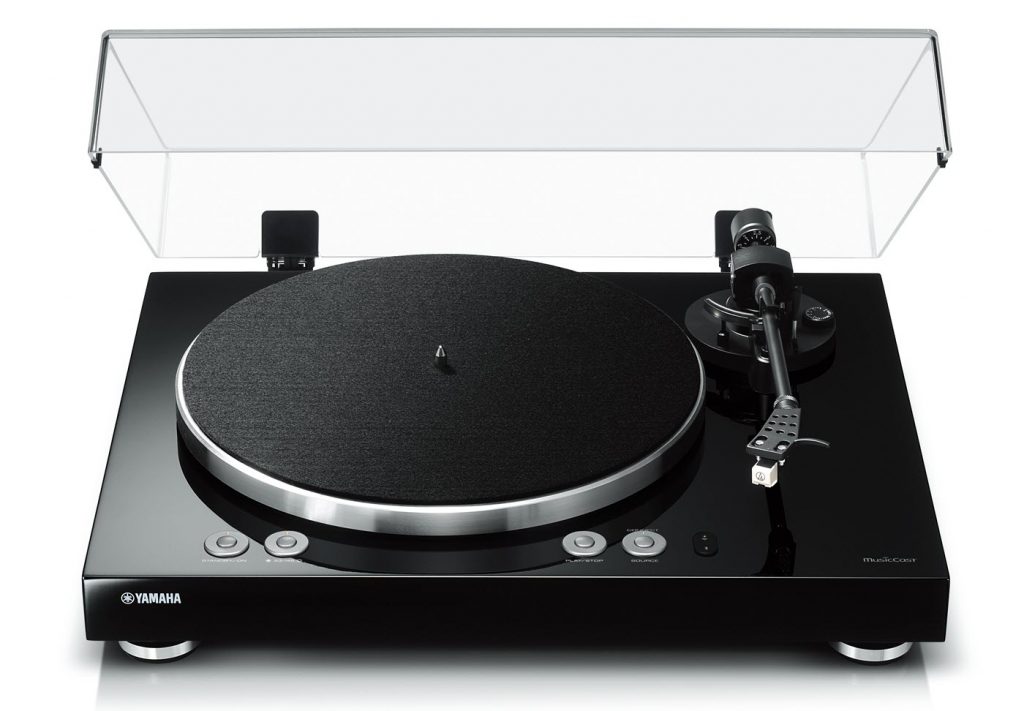
“Blendable” Speakers
One of the most effective ways at downplaying the visual aspects of a home audio system is by building the speakers into the walls or ceiling. Recessed flush with the wall or ceiling surface, they blend seamlessly into the home environment. What’s more, the grilles of many of these types of speakers can be painted to render them even more inconspicuous.
However, despite their cosmetic attributes, built-in speakers can be tricky to install. Freestanding speakers afford a simpler installation, and many, like the Yamaha MusicCast 20 and MusicCast 50, have been purposely engineered to maintain a low profile. To ensure that your speakers complement the room design, look for models that can be ordered in different colors — black and white are usually standard choices. If they’re wireless, all the better, since you can tuck those kinds of speakers anywhere, freely reposition as necessary, and add more easily to expand your home audio system. What’s more, they can be controlled by your favorite voice assistant, whether you’re using a device powered by Alexa, Google Assistant or Siri.
The Supermodel of Speakers: The Sound Bar
There’s no way around it: Speakers and component systems take up a lot of space. For rooms short on square footage, a sound bar offers a space-saving alternative that looks great. Long and thin, they are the supermodels of the home audio world and complement a flat-panel TV perfectly.
But they’re not just a pretty face. Packed into the sleek housing are a number of speakers and technologies. A sound bar like the Yamaha YAS-109 does the job of the left, right, center and subwoofer channels of a surround sound system, plus it even offers built-in voice control via Amazon Alexa.
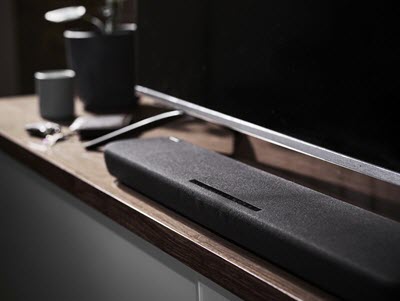
A sound bar also gives you lots of placement options: Mount it to the wall, place it on a table, or put it on a shelf above or under your TV — whatever works best.
Home Audio: A Happy Marriage of Design and Technology
Technology is rarely considered a thing of beauty, but in the world of home audio, form and function go hand-in-hand. As audio components continue to change in size, they also are packing in more capabilities, precluding the need for wiring, huge equipment racks, and all the other elements that can compromise the aesthetics of a home. Want to have numerous large components filling your space? The option is still there, if that’s what you’re looking for. But these days, fashion-forward receivers, turntables, speakers, sound bars and the like are endowing beautiful homes with equally beautiful music.
Click here for more information about Yamaha MusicCast.
Click here for more information about Yamaha AV receivers.
Click here for more information about Yamaha in-home speakers.
Click here for more information about Yamaha sound bars.
Click here for more information about the Yamaha MusicCast VINYL 500 turntable.










